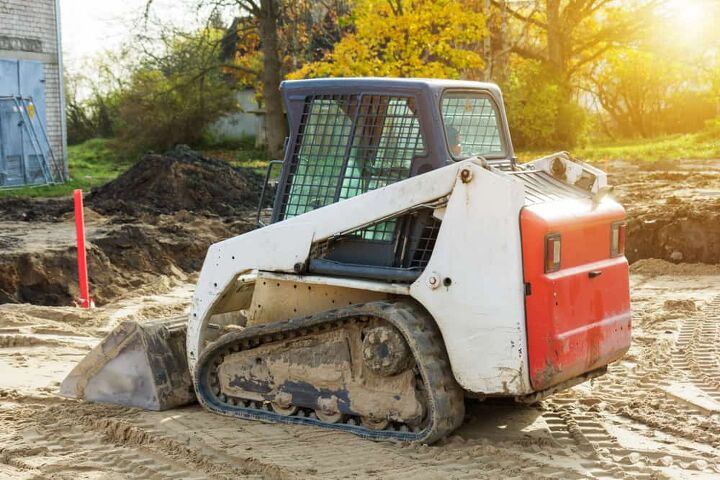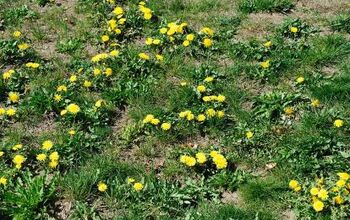How To Grade A Yard With A Bobcat (Step-By-Step Guide)

People do not realize how important it is to have a level yard until they actually have a project that requires a little stability. Whether it’s installing a pool or getting a more reliable driveway, there will be times when you need to grade a yard. One of the most popular tools to grade a yard is a Bobcat. But, how do you do this with this drivable beast?
Grading soil with a Bobcat will require several major steps:
- Start by preparing the area with the appropriate barriers, cleaning grass and rocks off your property, and getting the Bobcat.
- Use the Bobcat to shave off parts of the unlevel yard, starting at a location that is as level as possible.
- Send the excess soil to a spoils pile.
- As you level, create benchmarks and check out the grading of your yard. Adjust low spots with new soil.
- Once you are done, call a dump truck to remove the excess dirt and use the Bobcat to tamp down the soil.
Working with a Bobcat isn’t something that most homeowners are ready to do on their own. If you want to give this a try, read this guide to help you determine if this is the best course of action for you.
Do You Need Major Grading or Resloping Services?
Get free, zero-commitment quotes from pro contractors near you.

How To Prepare Your Yard For Grading With A Bobcat
Renting a Bobcat is only a small part of the entire process. If you want to grade your yard legally and successfully, you have a lot of work to do in terms of preparation. Here’s what you will have to do:
- Fence off the area that you want to dig. The vast majority of municipalities have safety ordinances that require you to establish a barrier fencing in the area that you will be grading. This can usually be done with wooden posts and a 3-foot high fence made from silt fencing.
- Start prepping the soil you want to be graded for digging. Make sure the grass, large rocks, and roots from plants are removed from the area. Loosen up the soil. Remove any trees and stumps that could be there, as well as any existing pavement. This, in and of itself, can be a full project.
- Make sure that you’re good to dig in the area. Call DigAlert to make sure that there aren’t any gas lines or electrical lines in the area that you are looking to dig. If this service is not available to you, call 211.
- Arrange for Bobcat and dump truck rental. You will have to make sure that you have the right room for the excess soil and that you will be able to have enough filler soil to fill any low spots you may have in. You may need to ask a professional for help here.
- Order topsoil. Topsoil is not going to be the only soil you need, but it’s a must for a healthy lawn or garden. Get 2 inches of topsoil for lawns, and eight for regular garden beds.
How To Start Grading Your Soil
Once you have all the supplies in hand, you’re ready to grade your soil. This, too, is a pretty complex procedure. Here’s how you can do it:
- Start by getting your grade on at a location that is fairly level. Your soil may not be entirely level, but there’s usually one place or another that’s pretty level. To do this, you are going to have to do something called “cutting the grade.” Start at the level area, get the bucket to be parallel to the ground, and position the bucket a couple of inches above the ground level. Then, start scooping the high areas.
- Keep cutting the grade until you have a fair level in your yard. Place the excess soil in a spoil pile, near an area where your dump truck will be able to pick it up.
- Continue doing the rough grade, eyeballing the area as you go. You will need to clear out your area fully on an initial attempt.
- Then, shoot grade elevations and put measuring sticks throughout the rough grading. This can often be done by a professional surveyor, and honestly, it’s actually your best measure. Most of the time, municipalities won’t take kindly to people who botch elevation grades. Besides, it’s a must for a pool layout.
- Use the grading to create benchmarks. Remove soil from areas above the chosen benchmark, then add soil to areas that are low. Once the areas are level, tamp down the soil using your Bobcat.
- Top your area with topsoil once everything is done. This can be done with the Bobcat, or by hand.
- Get your dump truck to remove spoiled soil and clean up your area. Might we suggest reading up on the cost of hydroseeding your new, level lawn?
Is This A DIY Project?
Honestly, no. If you want to do the surveying on your own, you will need to have at least one assistant to help you with marking off territory. Most of the time, doing your own surveying will end up with serious mistakes. Besides, most people are not going to be able to use a Bobcat very well.
While it is possible to do it on your own, we do not suggest it as a DIY project. This is both due to local municipal guidelines that might actually ban this practice altogether as well as the results you get. Driving a Bobcat and operating a Bobcat is not something most people are trained to do!
If you find yourself in a position where you drive a Bobcat and cause damage to your property (or worse, someone else’s), the financial outcome could be devastating for you. It’s better to just hire a professional, if only to stay on the safe side.
How Much Does Professional Land Grading Cost?
One of the reasons why people often try to grade their yards on their own deals with cost. The price can be prohibitively high, especially in areas where the current grade is very high. On average, you can expect to pay between $5 to $10 per square foot of ground that needs to be leveled.
If you have to prep the soil and remove trees, you may need to face additional fees. Some municipalities also require a permit to grade soil, even if it’s for a relatively minor plane of land. If you are in one of these areas, you will need to get a permit. Permit fees can range between $25 to $75 on average.
What Happens If You Accidentally Damage Your Home With A Bobcat?
Honestly? It can vary greatly. In most cases, you will need to file a claim with your homeowner’s insurance company. You may also have to call the Bobcat rental company that you got the machine from so that they can file a claim with their insurer. From there, they may end up coming over to take photos of the damage.
From there, your homeowner’s insurance company will figure out how to pay out everything. Because it’s technically a vehicular accident, you might not get all the damages covered. If a fence fell, then your insurance might be able to cover it. If another car was damaged in the accident, then their car insurance company may also bill yours as a result of the damage.
All in all, it will be a pretty messy insurance issue for all parties involved. It’s safe to assume that you will not have the entirety of your accident covered by insurance and that your insurance rates will increase. Ergo, we do not suggest doing this on your own!
Do You Need Major Grading or Resloping Services?
Get free, zero-commitment quotes from pro contractors near you.

Related Questions
Is it hard to operate a Bobcat?
It depends on the person. At first glance, it’s going to be intimidating for just about everyone. However, the learning curve is pretty easy and most people get the hang of it pretty fast. It’s often likened to a riding mower with a couple of extra controls for scoops. You do not need to have a special license to operate one in most jurisdictions.
How much weight can a Bobcat lift with forks?
If you have shrapnel or other items in your yard, a Bobcat can prove to be a pretty popular tool to use. A typical Bobcat will have a maximum capacity of 2,500 pounds per lift. This makes it one of the most effective ways to ensure that you move large items via a lifter, not to mention one of the most affordable.
What is the best type of soil for grading?
Grading soil requires several different types of soil, but the one which most people are concerned about is the one that involves you tamping down on it as a way to ensure a firm foundation. This is sometimes called the filler soil, and it’s used to add to areas that do not naturally have enough soil.This soil needs to be easy to compact and tamp down. That’s why most experts use clay-heavy soil as filler soil for leveling purposes. It’s easy to work with.

Ossiana Tepfenhart is an expert writer, focusing on interior design and general home tips. Writing is her life, and it's what she does best. Her interests include art and real estate investments.
More by Ossiana Tepfenhart



























